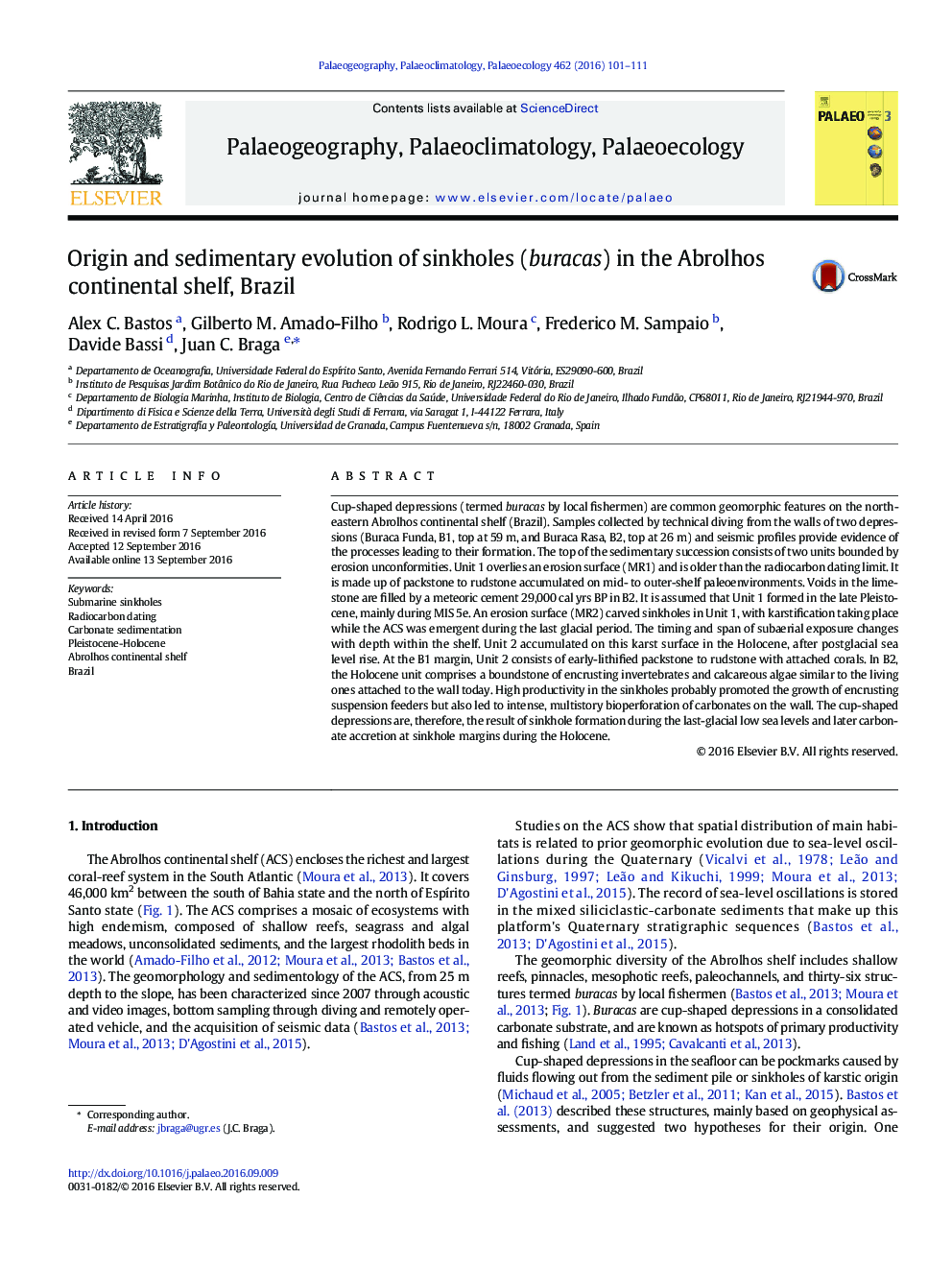| کد مقاله | کد نشریه | سال انتشار | مقاله انگلیسی | نسخه تمام متن |
|---|---|---|---|---|
| 4465513 | 1622129 | 2016 | 11 صفحه PDF | دانلود رایگان |
• Cup-shaped depressions (buracas) are common in northeastern Abrolhos Shelf (Brazil).
• Two sedimentary units separated by an erosion surface comprise the depression walls.
• The Pleistocene marine lower unit was subaerially exposed during the last glacial.
• The Holocene top unit mainly consists of boundstone of encrusting organisms.
• The buracas are last-glacial karst sinkholes deepened by Holocene carbonate accretion.
Cup-shaped depressions (termed buracas by local fishermen) are common geomorphic features on the northeastern Abrolhos continental shelf (Brazil). Samples collected by technical diving from the walls of two depressions (Buraca Funda, B1, top at 59 m, and Buraca Rasa, B2, top at 26 m) and seismic profiles provide evidence of the processes leading to their formation. The top of the sedimentary succession consists of two units bounded by erosion unconformities. Unit 1 overlies an erosion surface (MR1) and is older than the radiocarbon dating limit. It is made up of packstone to rudstone accumulated on mid- to outer-shelf paleoenvironments. Voids in the limestone are filled by a meteoric cement 29,000 cal yrs BP in B2. It is assumed that Unit 1 formed in the late Pleistocene, mainly during MIS 5e. An erosion surface (MR2) carved sinkholes in Unit 1, with karstification taking place while the ACS was emergent during the last glacial period. The timing and span of subaerial exposure changes with depth within the shelf. Unit 2 accumulated on this karst surface in the Holocene, after postglacial sea level rise. At the B1 margin, Unit 2 consists of early-lithified packstone to rudstone with attached corals. In B2, the Holocene unit comprises a boundstone of encrusting invertebrates and calcareous algae similar to the living ones attached to the wall today. High productivity in the sinkholes probably promoted the growth of encrusting suspension feeders but also led to intense, multistory bioperforation of carbonates on the wall. The cup-shaped depressions are, therefore, the result of sinkhole formation during the last-glacial low sea levels and later carbonate accretion at sinkhole margins during the Holocene.
Journal: Palaeogeography, Palaeoclimatology, Palaeoecology - Volume 462, 15 November 2016, Pages 101–111
